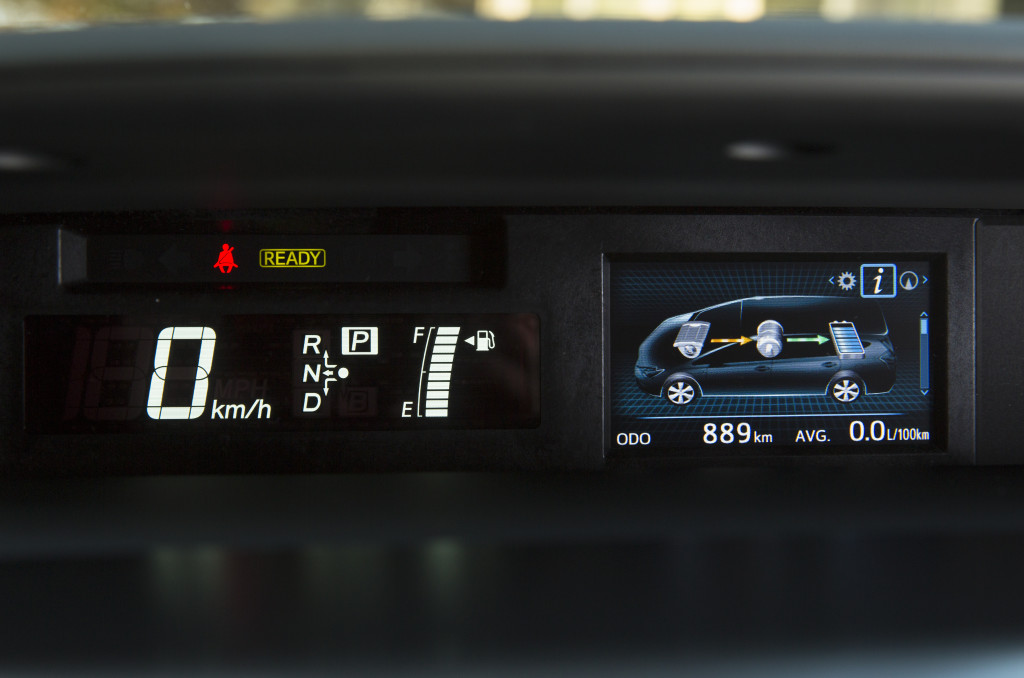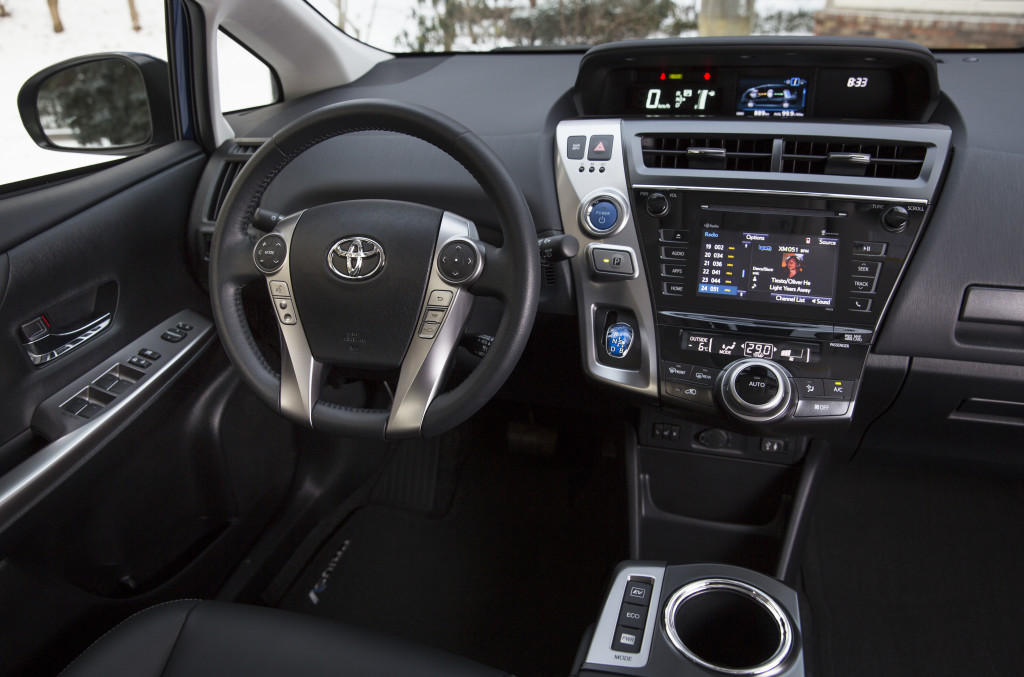After playing recreational hockey one morning, one of the other players noticed the car I was driving. He drives an upscale crossover, but he enthused that this was the vehicle he would have bought if his family supported the choice.
What was I driving? The “big Prius,” Toyota’s Prius v.
Exterior
In comparison to many other vehicles on the road, the Prius’s looks could kindly be called pedestrian, even though Toyota has punched up the design for this model. New front styling and taillights add edges to the design. The Blue Ribbon Metallic exterior shows the car’s understated lines. Low-profile tires make the vehicle look sportier. But it remains utilitarian overall. That’s fine with me, since I can more easily trust vehicles that look utilitarian.
Cabin
Toyota says the “v” stands for versatility. After a week with this car, I concur with Toyota’s nomenclature.
Storage cubbies abound, including a large auxiliary box between the passengers that easily fit a messenger bag containing an iPad, notebook and water bottles.
The Prius passed the hockey bag test with aplomb, once I unhooked one end of the cargo net at the edge of the hatch. Toyota claims the v offers 60% more space than its little cousin, the Prius Liftback.

There’s more room between the bag and the back seats in this cavernous hatch. I could have fit two such bags here without folding down the rear seats.
The Prius v features an upscale interior. My tester was the Technology Package, which adds a “panoramic sunroof” to the vehicle. Much of the car’s roof is fixed glass, so there’s no physical opening to the outside, just a view of the sky above for both front and rear seat passengers.
Technology
Maybe it’s the big batteries, or that the hybrid-buying demographic loves technology, but the Prius has always sported more in-car tech than the average vehicle.
I turned on the lane departure alert to give it a spin by changing lanes without signalling (I know, walking on the wild side again). It worked.
I did NOT test the pre-collision system.
Dynamic Radar Cruise Control lets drivers set cruise control to maintain a set distance between the Prius and the vehicle ahead.
Safety features too long to list start with the six active safety technologies Toyota refers to as the Star Safety System: ABs, traction control, stability control and others.
Driving
Once you start the engine with a button, as you’d expect in a hybrid, there’s no noise because the electric motor kicks in. It’s so quiet, Toyota added a vehicle proximity notification system so the Prius doesn’t sneak up on pedestrians, cyclists, skateboarders. Shift into reverse and you’ll hear a beeping not unlike what you’d hear from a truck backing up.
The v’s shifter also includes a B for extra braking force on downhill slopes or when the driver lets off the accelerator. The effect is similar to that of the “2” and “1” settings on older automatic transmissions.
Once you move the shifter into “D” you can move forward. That’s about all the excitement people expect from hybrids.
Toyota seems to want to rid the v of the ho-humness of hybrids by offering different driving modes. Designers seem so intent on making people try those modes that, unlike the slightly hidden switches for stuff like the lane departure alert, Toyota put three driving mode buttons beside the driver’s right thigh. They are:
- Power: what you can use on hilly terrain (or for a little more fun)
- Eco: maximizes fuel economy
- EV: given the right circumstances, the Prius can drive a short distance on battery power alone.
Normal doesn’t get its own button. Turn off one of the other driving modes by pressing that button a second time and the Prius goes back to normal driving mode.
To be fair, mashing the gas pedal in Normal mode produces all the power you’re likely to need from the v’s 1.8 Litre, Hybrid Synergy Drive (HSD) motor offering a net 136 hp.
Toyota put a system it calls Pitch and Bounce Control in the vehicle to make the ride smoother.Whether on city roads or the highway, the Prius delivered a smooth, comfortable ride.
On the highway, battery regeneration came mainly from the gas engine, since I wasn’t braking much.Hybrids tend to get better mileage in stop-and-go conditions, since they use kinetic energy generated by braking to top up the battery.

The graphic to the right indicates the gas and electric motors are recharging the v’s battery. Photo courtesy Toyota Canada
Pricing
Toyota sells the Prius v starting at $28,090 MSRP. My tester, with options of $6,0005, plus the usual taxes and fees, lists at $35,847.85.


